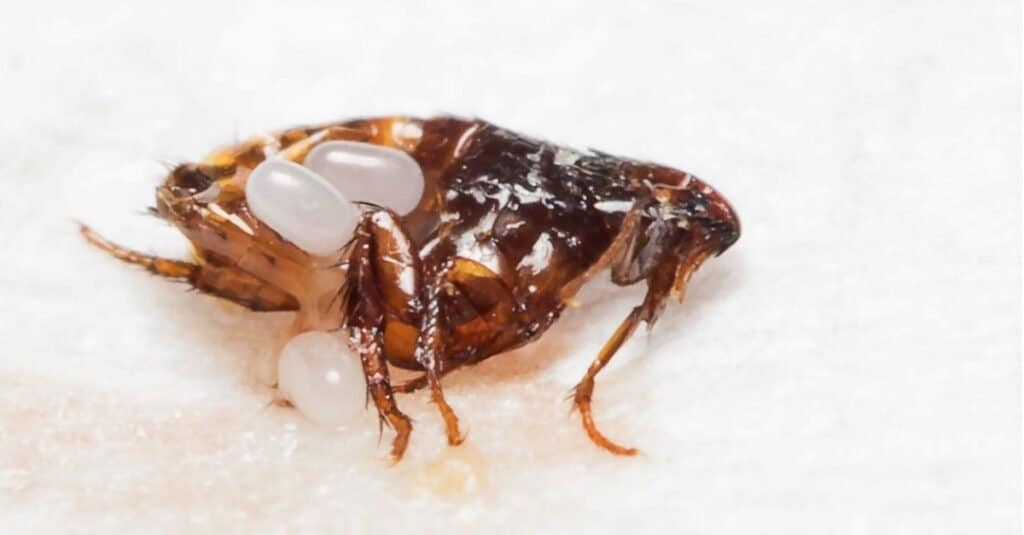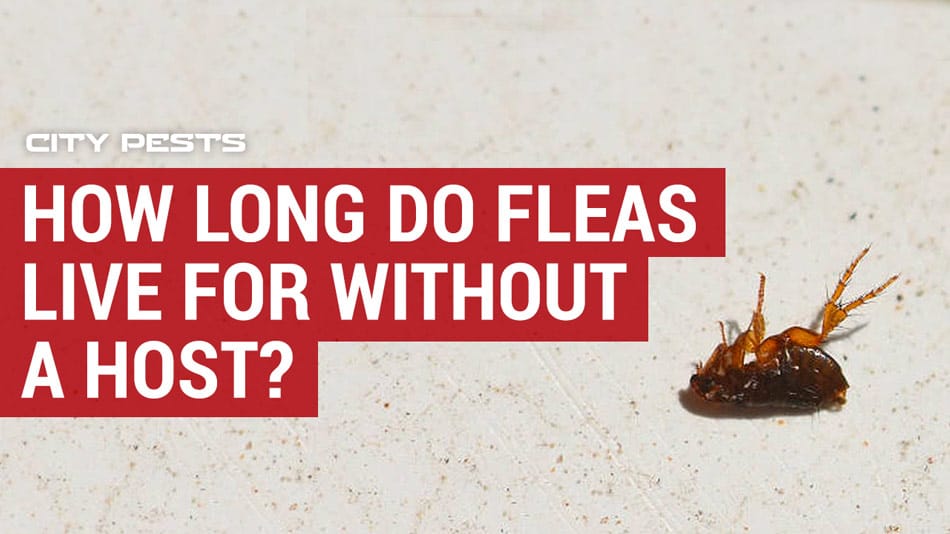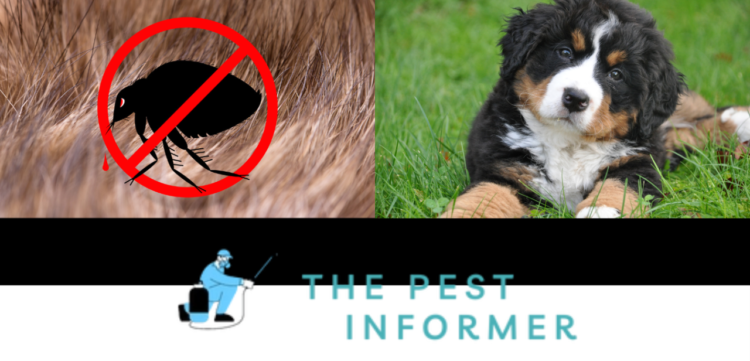
How long will fleas live in a house without pets? It’s a question that often arises when you’ve had a pet with fleas and are now trying to rid your home of these pesky parasites. Fleas, while primarily known for their association with pets, can survive for surprisingly long periods without a host. They’re resilient creatures that can thrive in a variety of environments, even in the absence of furry companions.
Understanding the flea life cycle and their ability to survive independently is crucial for effectively eliminating them from your home. This article delves into the fascinating world of fleas, exploring their life cycle, survival tactics, and how to effectively control infestations.
Flea Habitats in Homes
Fleas are parasitic insects that thrive in warm, humid environments and are often found in homes with pets. They can survive for extended periods without a host, relying on their ability to hide in various locations. Understanding the common flea habitats in homes is crucial for effective flea control.
Common Flea Breeding Grounds
Fleas prefer warm, dark, and humid environments where they can lay their eggs and breed. Some common flea breeding grounds in homes include:
- Carpets: Fleas are attracted to the fibers of carpets, where they can easily hide and lay their eggs.
- Furniture: Upholstered furniture, such as sofas, chairs, and beds, provides ample hiding places for fleas.
- Bedding: Bedding, including blankets, sheets, and pillows, can harbor fleas, especially if pets sleep on them.
- Basements and Crawl Spaces: These areas are often damp and dark, providing ideal conditions for flea breeding.
- Cracks and Crevices: Fleas can hide in cracks and crevices in floors, walls, and furniture.
How Fleas Hide and Survive
Fleas are incredibly adaptable and can survive in various environments. They are small, measuring only about 1/8 inch in length, and can easily squeeze into tight spaces.
- Carpet Fibers: Fleas can hide within the fibers of carpets, where they are protected from view and predators.
- Furniture Upholstery: Fleas can burrow into the fabric of furniture, making them difficult to reach with conventional cleaning methods.
- Under Furniture: Fleas often congregate under furniture, where they are protected from light and drafts.
- Baseboards and Moldings: Fleas can hide along baseboards and moldings, where they are protected from view and can easily access other areas of the house.
Factors Contributing to Flea Infestations
Several factors can contribute to flea infestations, including:
- Environmental Conditions: Warm, humid environments are ideal for flea breeding.
- Presence of Food Sources: Fleas feed on the blood of animals, so the presence of pets in a home increases the risk of an infestation.
- Lack of Proper Hygiene: Regular cleaning and vacuuming can help to remove fleas and their eggs, but neglecting these tasks can lead to an infestation.
Flea Detection and Removal: How Long Will Fleas Live In A House Without Pets

Flea infestations can be a nuisance, even without pets in the house. Fleas can survive for a long time in a home without a host, so it’s important to be able to identify signs of an infestation and take steps to remove them.
Identifying Flea Infestations
Identifying the signs of a flea infestation is crucial to taking prompt action. The most common signs include:
- Flea Bites: Flea bites are small, red bumps that are often itchy and may appear in clusters. They are typically found on the ankles, legs, and feet, but can occur anywhere on the body.
- Flea Droppings: Flea droppings, also known as “flea dirt,” are tiny black specks that resemble pepper. They are found in areas where fleas congregate, such as carpets, rugs, and bedding.
- Adult Fleas: You may be able to see adult fleas jumping or moving quickly across the floor or furniture. Adult fleas are small, dark brown insects with flat bodies.
Effective Methods for Detecting Fleas
Several effective methods can be used to detect fleas in your home:
- Flea Comb: A flea comb is a fine-toothed comb specifically designed to remove fleas from pets. It can also be used to check for fleas in carpets, rugs, and bedding. To use a flea comb, run it through the suspected area and inspect the comb for fleas or flea droppings.
- Visual Inspection: Carefully inspect areas where fleas might hide, such as carpets, rugs, furniture, bedding, and along baseboards. Look for signs of fleas, such as flea droppings, flea eggs, or adult fleas.
Recommended Flea Control Methods
Once you have detected a flea infestation, it’s essential to take steps to eliminate them. Several methods can be used to control fleas:
- Vacuuming: Vacuuming regularly can help remove fleas, eggs, and larvae from carpets, rugs, and furniture. Empty the vacuum bag or canister outside after each use to prevent fleas from escaping.
- Washing Bedding: Wash all bedding, including sheets, blankets, and pillows, in hot water (at least 130°F) to kill fleas and their eggs. Dry the bedding on a high heat setting for at least 30 minutes.
- Insecticides: Insecticides can be effective in killing fleas, but they should be used cautiously. Choose insecticides that are specifically designed for flea control and follow the manufacturer’s instructions carefully.
Preventing Flea Infestations

Preventing flea infestations is crucial for maintaining a clean and healthy home environment. Fleas can be difficult to eradicate once they have established themselves, so taking proactive measures to prevent them from entering your home is essential.
Regular Cleaning and Maintenance
Regular cleaning and maintenance play a vital role in preventing flea infestations. Fleas thrive in dirty environments, so keeping your home clean can significantly reduce their chances of survival.
- Vacuuming Regularly: Vacuuming your carpets, rugs, and furniture at least once a week can help remove fleas and their eggs. Pay special attention to areas where your pets spend most of their time, such as beds, couches, and play areas. Empty the vacuum cleaner bag or canister immediately after each use to prevent fleas from escaping back into your home.
- Washing Bedding: Wash your pet’s bedding in hot water and dry it on high heat at least once a week. This will kill any fleas or eggs that may be present in the bedding. You should also wash your own bedding regularly, especially if your pets sleep in your bed.
- Treating Pets: Use a flea preventative product for your pets, as recommended by your veterinarian. These products can help prevent fleas from infesting your pets and spreading to your home. There are various types of flea preventative products available, including topical treatments, oral medications, and collars.
Sealing Cracks and Crevices
Fleas can easily enter your home through cracks and crevices in the walls, floors, and foundation. Sealing these openings can help prevent fleas from gaining access to your home.
- Inspect your home: Look for any cracks or gaps in the walls, floors, and foundation. This includes areas around doors, windows, pipes, and vents.
- Seal cracks and crevices: Use caulk, sealant, or weather stripping to seal any cracks or gaps you find. You can also use steel wool to fill in larger holes.
- Maintain screens: Make sure your screens are in good condition and free of tears or holes. This will help prevent fleas from entering your home through windows and doors.
Professional Pest Control Services, How long will fleas live in a house without pets
For severe flea infestations, professional pest control services can be a valuable resource. Pest control professionals have the knowledge and expertise to effectively eliminate fleas and prevent future infestations.
- Expert Treatment: Pest control professionals can use a variety of methods to treat flea infestations, including insecticide sprays, foggers, and dusts. They can also provide recommendations for preventing future infestations.
- Targeted Solutions: Pest control professionals can identify the source of the flea infestation and tailor their treatment plan accordingly. This can help ensure that the treatment is effective and minimizes the risk of harming your pets or family.
Final Wrap-Up

Fleas can be a persistent problem, but with the right knowledge and strategies, you can effectively manage and eliminate them from your home. Understanding their life cycle, their ability to survive without pets, and their preferred habitats are essential for developing a comprehensive control plan. Regular vacuuming, washing bedding, and sealing cracks and crevices are key preventative measures. For severe infestations, seeking professional pest control services can provide the most effective solution. By taking a proactive approach and implementing these strategies, you can create a flea-free environment for yourself and your family.
Q&A
What are the signs of a flea infestation?
Common signs include flea bites, flea droppings (tiny black specks), and adult fleas seen jumping or crawling.
Can fleas live in furniture?
Yes, fleas can hide in furniture, especially upholstered furniture, cracks and crevices, and under cushions.
How long can fleas live without food?
Adult fleas can survive for several weeks without a blood meal, but their lifespan will be significantly shorter.
Are fleas dangerous to humans?
While fleas primarily target animals, they can bite humans. Flea bites can cause itching, irritation, and in some cases, allergic reactions.





